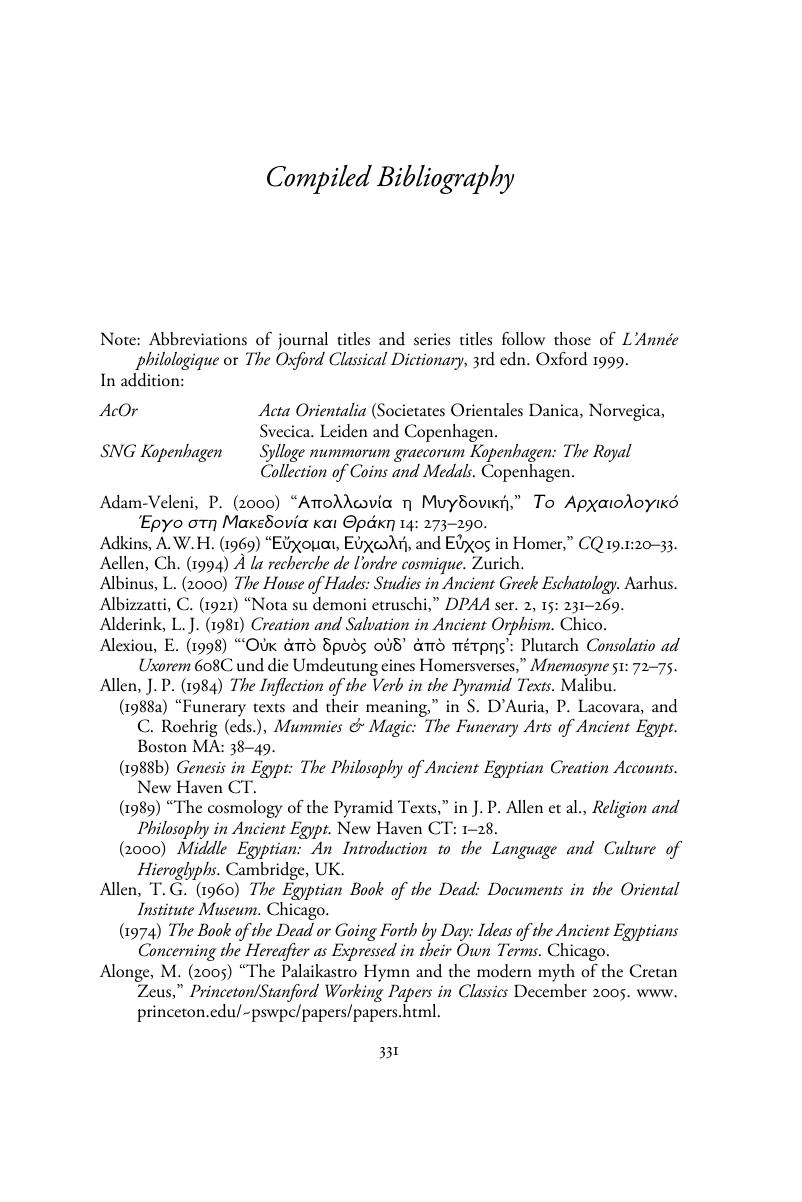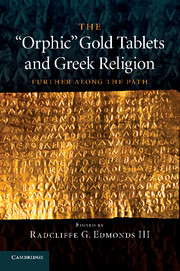Compiled Bibliography
Published online by Cambridge University Press: 04 February 2011
Summary

- Type
- Chapter
- Information
- The 'Orphic' Gold Tablets and Greek ReligionFurther along the Path, pp. 331 - 371Publisher: Cambridge University PressPrint publication year: 2011

